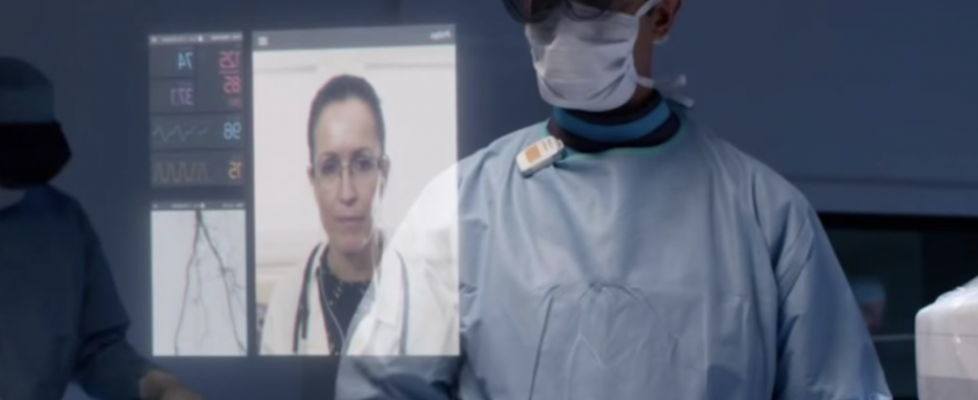Improving the Clinical Response to Patient Data
By 2025, the World Economic Forum estimates that 463 exabytes of data will be created each day. Already, a single patient generates close to 80 megabytes each year in imaging and electronic medical record (EMR) data, according to an Innovation in Care Delivery article.
While many clinicians and health care providers are hesitant to integrate aspects of AI into their practice, patient-generated health data (PGHD) offers numerous benefits. With up-to-date, accurate data, clinicians can anticipate, diagnose, and treat patients more effectively.
Although data-driven care may lead to concerns about losing some of the personal aspects of patient care, studies show that the average length of time allocated to patients in a clinical setting is only 17.4 minutes, which is problematic for patients with chronic conditions who need frequent attention and ongoing care. Utilized together with telehealth, it’s vital to the future of a high quality preventative approach. The Benefits of Daily Monitoring
Consumer spending on wearable devices (including pedometers and heart rate monitors) will total $52 billion by the end of 2020, according to Gartner. Two-thirds of respondents to a Rock Health survey said they bought a wearable device to be more active and 42% of those respondents said they would share their health data with physicians if it resulted in improved healthcare.
Health data is constantly being collected on Fitbits, Apple Watches, and various wearable devices, which not only benefits users on a daily basis, but has the ability to tell clinicians far more than any one-on-one clinical visit can.
With a patient’s permission, a more complete view of the patient’s needs and health status can be informed through the following collected data:
- Biometrics, which includes heart rate, heart rate variability, blood pressure, respiratory rate, O2 saturation, weight, temperature, and collected blood tests
- Activity and functional markers, such as sleep disruption and gait
- Behavioral markers, which includes engagement, sleep patterns, activities of daily life, food consumption, and medication adherence
- Environmental and social context, which includes access to transportation, proximity to nearest pharmacy or hospital, mean household income, weather, temperature, and air quality
With wearables tracking their daily health habits, patients don’t have to wait to talk to a doctor and they don’t have to keep running lists of their daily behaviors, nor do they have to rely on their clinicians to make uninformed decisions. This data can improve prognosis, diagnostics, and timely care response.
Prioritizing Prevention Over Reactive Care
One person dies every 36 seconds from cardiovascular disease in the U.S., according to the CDC and a peer-reviewed research report on Heart Failure medication management found that only 1% of patients are on the expected combination of medications and respective dosage.
Cardiovascular physicians often express frustration trying to titrate Heart Failure patients’ medication without comprehensive data. Typically, clinicians must rely on the “wait and see” method when it comes to treatment which is an archaic form of care in this digital age of self-driving cars and eco-friendly energy.
This paradigm shift is paving the way for a more preventative patient-focused future. With patient data, clinicians can make more effective medication regimens and doses, adhering to professional societies’ Guideline-Directed Medical Therapy (GDMT), but also predict changes and make preventative and rescue interventions.
Rather than wasting one-on-one time on questions of symptoms and changes in behavior or psychological health, clinicians can be armed with up-to-date information on the patient’s condition and maximize that time with richer dialogue.
Bridging the Gap in Patient Care
Making this data available to clinicians is going to have a significant payoff. We have spent countless hours at Myia Heath observing patient-clinician interactions, interviewing patients in their homes, researching healthcare’s outcome and economic pain-points, and iteratively refining our solution with doctors and nurses supporting high risk chronic patients. PGHD, collected and synthesized in the right way, will have a material positive impact by facilitating more individualized care.
Doctors and nurses already spend far more time on screens than with patients. Triaging patient symptom information that was previously elusive given the sheer constraints of clinician time adds value to interactions and draws attention to what matters, enabling clinicians to learn quicker, respond better, and produce more valuable insights.
It should go without saying that the combination of parameters must be both clinically relevant as well as comprehensive to the patient’s condition. Understanding the context in which data is acquired is essential to creating a foundation of trust in the value of the information being communicated.
Ultimately, the challenge is to introduce technology that actually fosters and enhances the “human connection” between clinician and patient. It would allow clinicians to be better clinicians and people to be better patients. The best data and algorithms in the world will not count for anything if clinicians do not value and take action on them. This ability, to get clinicians to actually adopt PGHD in everyday practice, at scale, is the summation of the concept of “closing the last clinical mile” and enabling better care delivery.

